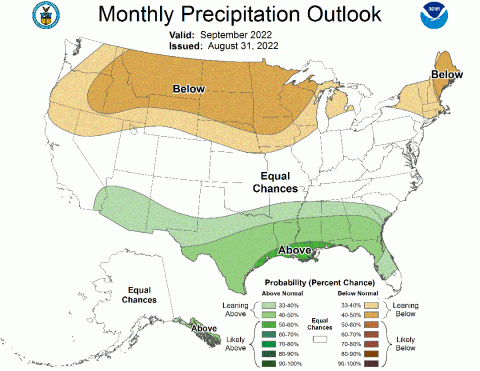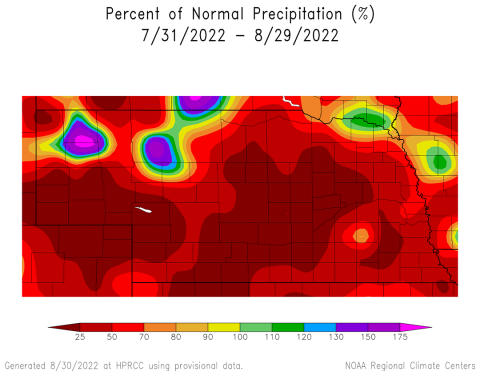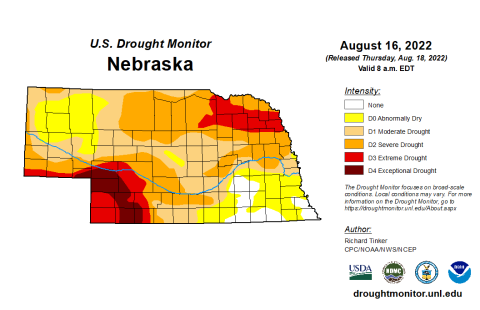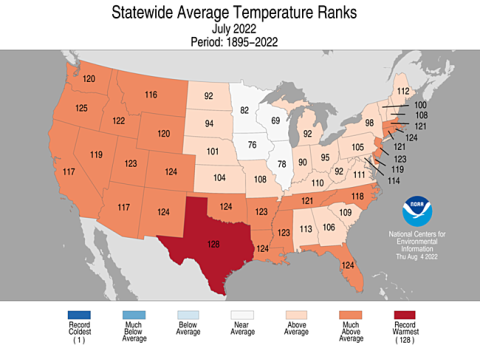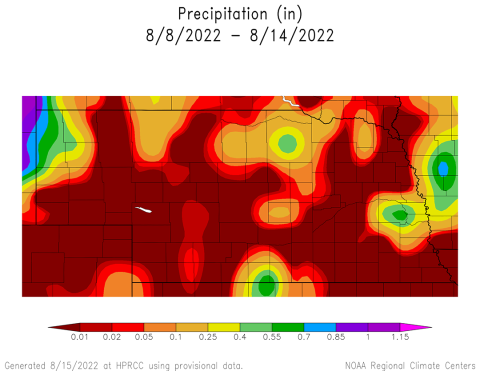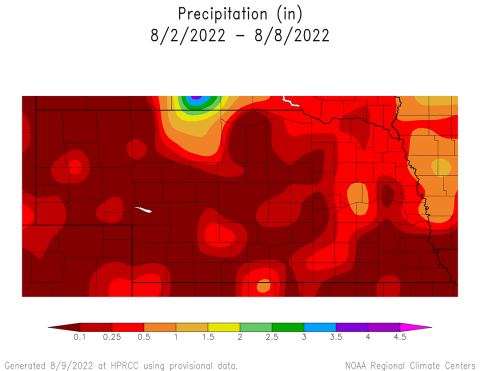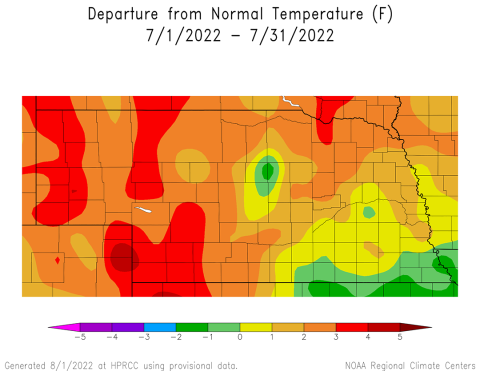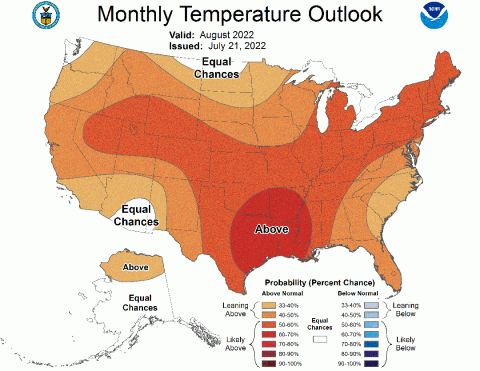Weekly Agricultural Weather Update — Sept. 7, 2022
September 8, 2022
The Climate Prediction Center's monthly outlook predicts the status quo to continue in Nebraska — above-normal temperatures in the 80s and 90s and below-normal precipitation, with potential rainfall events Sept 14-15 and 21-23.
Weekly Agricultural Weather Update — Aug. 30, 2022
September 1, 2022
A warmer and drier pattern is favored to continue for most of the first half of September — temperatures are anticipated to be in the 80s and mid-90s until Sept. 12, when cooler weather may move into Nebraska.
Weekly Agricultural Weather Update — Aug. 23, 2022
August 25, 2022
There's little relief in sight from intensifying drought conditions across the state — temperatures will remain in the 80s and mid-90s next week, with a small chance of showers Aug. 28 in eastern Nebraska.
Drought Covers 76% of Nebraska by End of July
August 18, 2022
Sustained heat in the high 90s and 100s combined with below-normal precipitation throughout July led to increased drought stress across Nebraska, with severe implications for pasture and sorghum conditions heading into August.
Weekly Agricultural Weather Update — Aug. 17. 2022
August 18, 2022
The current forecast holds a slightly cooler trend for Nebraska in August, with temperatures ranging from the 70s to low 90s through the end of the month and widespread precipitation anticipated Aug. 19-20 and Aug. 24-26.
Weekly Agricultural Weather Update — Aug. 9, 2022
August 11, 2022
Heat is expected to dominate in the central Plains over the next two weeks, and with few precipitation opportunities, further warm-season crop deterioration is anticipated.
Weekly Agricultural Weather Update — Aug. 2, 2022
August 4, 2022
Though high temperatures and minimal precipitation chances are expected to continue through the first 10 days of August, a possible break from the current heat event may develop in the second half of the month.
Weekly Agricultural Weather Update — July 26, 2022
July 28, 2022
Another round of extended heat is likely for the first week of August, with the possibility for precipitation beginning Aug. 6.
